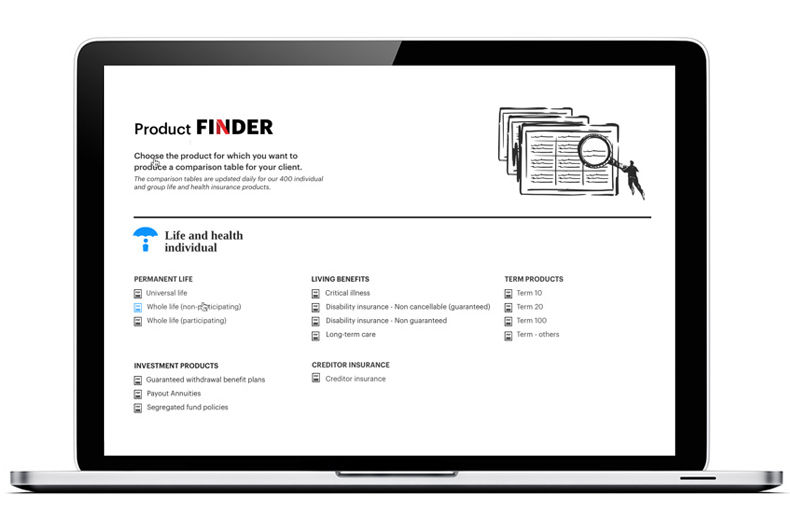Given current economic and regulatory circumstances, Canadian insurers face a number of challenges in 2012. However, it is a good time for them to step up to the plate and stand out from their competitors, says Michel Bergeron, who has recently been appointed leader of Ernst & Young’s institutional financial advisory services in Quebec.
According to Mr. Bergeron, the insurers that stand out from the crowd will be the ones that strengthen their risk management practices and make better use of technology and the Internet. They will also make every effort to learn more about changing consumer demographics.
“To be better positioned for growth and continue to achieve excellent results, insurers must focus on innovation, refine data analysis, and use social networks to better understand customers. The reduction of cost structures and the use of various scenarios for stress testing to better control cash flow can also generate competitive advantages in this context,” he says.
Mr. Bergeron listed ten items that Canadian life and and general insurers should focus on in 2012. These challenges relate to various issues, including market volatility, low interest rates, as well as changes in accounting standards and regulations.
Assets and liabilities
In life insurance, volatility remains the most important consideration for insurers. This is especially true following the U.S. Federal Reserve’s announcement that it plans to keep interest rates low during the coming years, says Mr. Bergeron.
“Keeping interest rates at a very low level increases the effect of their management process by tenfold. The impact of matching between assets and liabilities will be greater. If markets move a great deal, liabilities must also move. If insurers do not pay particular attention to this matching, their financial results will suffer,” he says.
Mr. Bergeron adds that insurers should improve cost controls, given that the current economic climate presents fewer opportunities. “This is a great time to step up. Spending is more maleable. Insurers will pay more attention to travel than they do now. This is also the time for them to look at their technological efficiency. If some things are still done manually, they can look to see which technological tools will allow them to find cost savings. It’s time for them to review their structure to enable them to cope with structural changes in the longer term,” he comments.
The convergence of regulation and accounting is another element that will bring about changes for life insurers. “The application of the International Financial Reporting Standards (IFRS) has been in development for several years. It will change the way insurers will account for things. The current rules mean that insurers have good asset-liability matching. IFRS will change that. When they look at their products, they will see that some are more volatile than others. These products will be reviewed, because insurers will be less willing to absorb this volatility. Products that have loads of rapidly moving market value will be less successful,” says Mr. Bergeron.
He added that fluctuations in results are larger for European insurers given the new IFRS rules. U.S. insurers are experiencing the least amount of fluctuation at the moment since they have not begun to implement the new rules. This is in comparison to Canadian insurers, who are starting to use IFRS. “This will change,” notes Mr. Bergeron. IFRS will make it possible to properly compare insurers around the world, he says.
“The most popular products may be those that carry a flat fee. This will bring stability to income and less variation in results,” he comments.
As mentioned earlier, Mr. Bergeron believes life insurers will benefit by improving their risk management and efficiency through technology. One way to do this is to make use of the Internet, which will allow them to increase brand visibility, reach new audiences, and build closer ties with consumers using Internet applications like social media.
But Canadian insurers will not be selling insurance over the Internet tomorrow, says Mr. Bergeron. “Life insurers have maintained a very traditional approach to sales, with an advisor who goes to see the client and has him fill out the paperwork. However, we can expect consumers to start asking insurers for information on the Internet and on social media. It will, however, be a long time before the customer can buy coverage on the Internet. Still, consumers will push things in that direction,” he says.
Well positioned
As for the general insurance sector, Mr. Bergeron emphasises that it is well positioned. “A few years ago, we saw combined ratios over 100%, but with a return on equity of 10%. Insurers must continue to ensure that their pricing gives them a return and not rely solely on investments. They are well prepared for this change, but they must remain vigilant,” he says.
He also believes that the volatility of capital markets and increased regulation could affect general insurers’ risk and capital management programs. Like their colleagues in life insurance, they will have to deal with low interest rates and the matching of assets and liabilities. They should do so by establishing an appropriate risk tolerance by identifying the relevant stress tests and assessing the risk exposure.
They too will have to work on improving their efficiency. This will include a better use of technology, says Mr. Bergeron. Social networks and cloud computing are some tools that can help.
“They need to invest much more to become better acquainted with their customers. Throughout the world, we see many insurers who are setting up new claims systems. Their goal is to have better internal management and to know the customer better. It’s a new way of thinking for banks and insurers. But it is a phenomenon that has been present in other industries for quite some time,” he comments.
These changes will also affect insurance mainframes, says Mr. Bergeron. They will also have to transform their billing systems to improve customer experience and cash flows.
“They should take steps to reduce waiting times for customers. It would be valuable to make the customer experience as efficient as possible to reduce this period of time,” he says.
Dealing with regulatory challenges
When one thinks of regulatory challenges for insurers, the life insurance industry is the first to come to mind. However, the general insurance business will see its share of change over the coming months, says Mr. Bergeron. In his opinion, insurers should strengthen their risk management infrastructure in order to meet regulatory challenges. “They would do well to focus on internal capital models for internal risk management, capital management, regulatory reporting requirements, and rating agencies’ assessments to improve risk management standards,” he says.
Mr. Bergeron adds that the arrival of the Solvency II rules, enacted in Europe, will have an impact on Canadian insurers. “The final version of these standards has not yet been approved. They will, however, be adopted one way or another. They will require changes in the way companies manage their capital. Insurers should also have good risk management practices, because they will need information in order to deal with Solvency II. During the next year, they will be busy with the transition to IFRS, but they are well equipped to cope with it,” he says.
The last challenge for insurers: adapting to changing customer expectations and profiles. To do this, insurers will need to develop marketing plans consisting of multi-network strategies, including both online and offline channels to meet customer expectations, says Mr. Bergeron.
He adds that the general insurance sector is closer than the life insurance business to Internet sales. “Consumers are already getting their quotes online. Internet sales can therefore evolve rapidly, although brokers will remain strong,” he says.
Adapted to climate change
In a study conducted in 2008 on the risks insurers face in terms of sustainable development, climate change was at the forefront both for general insurers and life insurers. However, this risk does not appear on the accounting firm’s list.
“Insurers have a handle on climate change. They know that the risk of disasters is more significant and subsequent analyses have been made. In 2008, climate change was an evolving risk. It is now part of everyday life for insurers and reinsurers,” he says.



